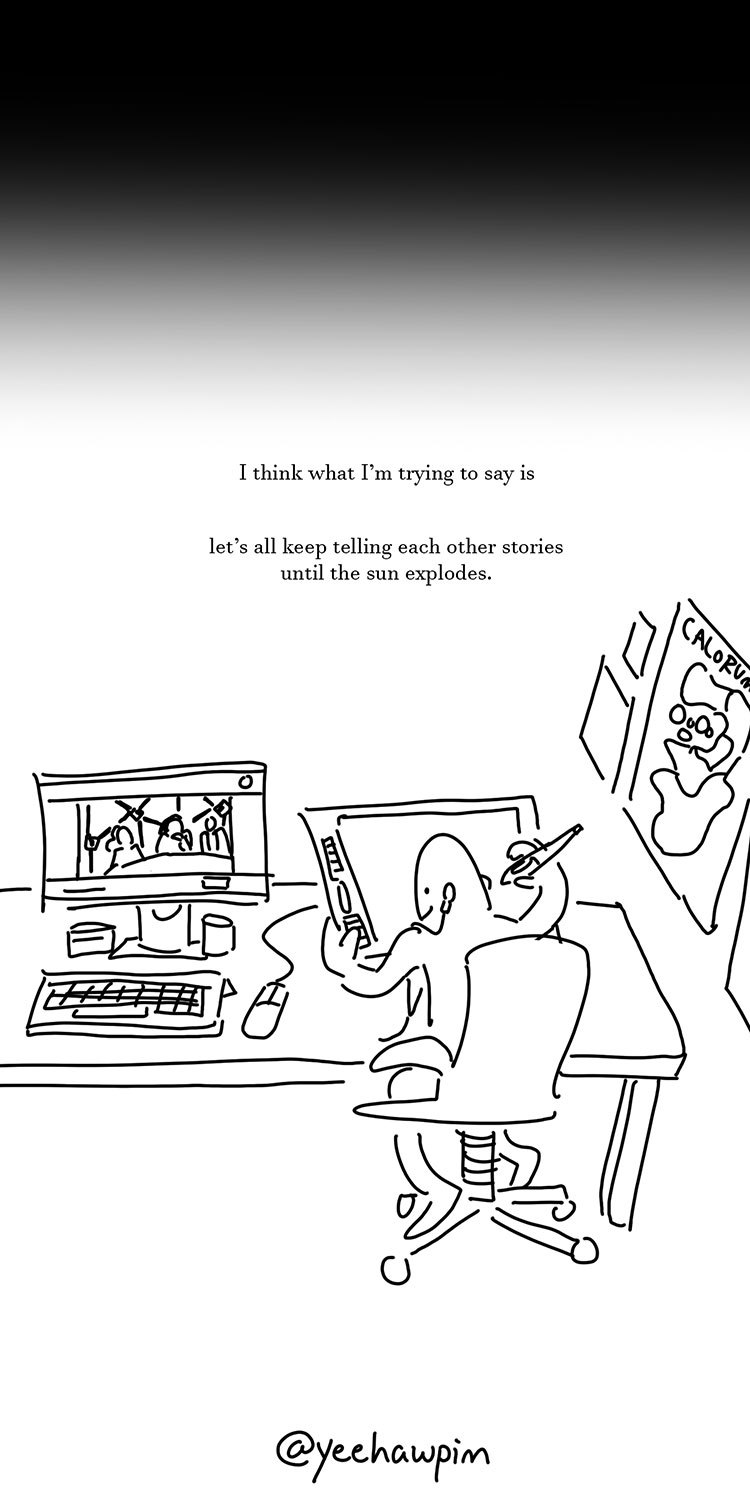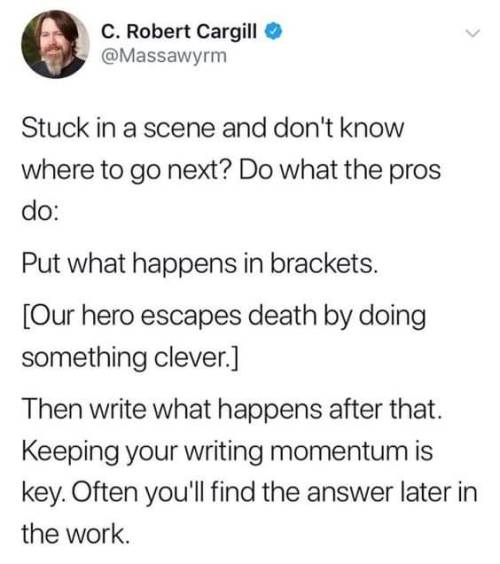Here’s Some Prompts For Spectober! I Can’t Wait To See All The Different Spins On These Prompts!
Here’s some prompts for Spectober! I can’t wait to see all the different spins on these prompts!

Alright, the art prompt is out! Remember, the event is planned for October, but that doesn’t mean you can’t start planning ahead :) And as one last reminder, we’ll be using the #spectober2020, which I’ll be looking out for on here, twitter, and instagram.
Prompts listed again beneath the cut
Keep reading
More Posts from Gatortavern and Others
ah yeah i remember reading this! It's an amazing article


no fucking way
This is such a neat piece! I'd probably actually buy this to put it up in my place if I had the money.

Sketchy Thoughts by Jason Limon
This is some pretty awesome art, good job!
Plz draw my girl Dr. Zarei

Oh Absolutely!
We love an icon who pulls off being both a badass and an absolute gay disaster
the critical thinking sheet filled with questions to mull over is nice and very much appreciated
Y’all “critical thinking” does not equal “criticism”.









a comic about different types of storytellers
How to Make Your Descriptions Less Boring
We’ve all been warned about the dangers of using too much description. Readers don’t want to read three paragraphs about a sunset, we’re told. Description slows down a story; it’s boring and self-indulgent. You should keep your description as short and simple as possible. For those who take a more scientific approach to writing fiction, arbitrary rules abound: One sentence per paragraph. One paragraph per page. And, for god’s sake, “Never open a book with weather” (Elmore Leonard).
But what this conventional wedding wisdom fails to take into account is the difference between static and dynamic description. Static description is usually boring. It exists almost like a painted backdrop to a play. As the name suggests, it doesn’t move, doesn’t interact or get interacted with.
There were clouds in the sky. Her hair was red with hints of orange. The house had brown carpeting and yellow countertops.
In moderation, there’s nothing wrong with static description. Sometimes, facts are facts, and you need to communicate them to the reader in a straightforward manner.
But too much static description, and readers will start to skim forward. They don’t want to read about what the house looks like or the stormy weather or the hair color of each of your protagonist’s seventeen cousins.
Why? Because they can tell it’s not important. They can afford to skip all of your description because their understanding of the story will not be impacted.
That’s where dynamic description comes in. Dynamic description is a living entity. It’s interactive, it’s relevant. It takes on the voices of your narrators and characters. In short, it gives us important information about the story, and it can’t be skimmed over.
So how do you make your description more dynamic so that it engages your readers and adds color and excitement to your story? Here are a few tips.
(I have a TON more tips about setting and description. These are just a few. But I’m trying to keep this short, so if you have any questions or want more advice about this, please feel free to ask me.)
Keep reading
Reblogging for the sheer amount of information (and the link inclusion!) in the last post, discussions like these are so fun to see.
Honestly the biggest disappointment I had researching ABC was that medieval authors did not, in fact, see the creatures they were describing and were trying their best to describe them with their limited knowledge while going “what the fuck… what the fuck…”
This is such a simple little video, and it's glorious. Has a bit of the "we're in a 70s cartoon and we're only making one noise to signify something got hit" vibe.
♪
-
 totallydrange reblogged this · 4 years ago
totallydrange reblogged this · 4 years ago -
 totallydrange liked this · 4 years ago
totallydrange liked this · 4 years ago -
 xmaster3000 liked this · 4 years ago
xmaster3000 liked this · 4 years ago -
 jacktsuki liked this · 4 years ago
jacktsuki liked this · 4 years ago -
 significantfoliage reblogged this · 4 years ago
significantfoliage reblogged this · 4 years ago -
 schistcity liked this · 4 years ago
schistcity liked this · 4 years ago -
 incorrectpnatquotes reblogged this · 4 years ago
incorrectpnatquotes reblogged this · 4 years ago -
 avatarherobrine reblogged this · 4 years ago
avatarherobrine reblogged this · 4 years ago -
 avatarherobrine liked this · 4 years ago
avatarherobrine liked this · 4 years ago -
 browniefox reblogged this · 4 years ago
browniefox reblogged this · 4 years ago -
 a-bitchtm reblogged this · 4 years ago
a-bitchtm reblogged this · 4 years ago -
 a-bitchtm liked this · 4 years ago
a-bitchtm liked this · 4 years ago -
 bookishnewt reblogged this · 4 years ago
bookishnewt reblogged this · 4 years ago -
 the-east-hunter reblogged this · 4 years ago
the-east-hunter reblogged this · 4 years ago -
 incorrectpnatquotes reblogged this · 4 years ago
incorrectpnatquotes reblogged this · 4 years ago -
 theevilbrainman liked this · 4 years ago
theevilbrainman liked this · 4 years ago -
 sizzymissed liked this · 4 years ago
sizzymissed liked this · 4 years ago -
 jukeboxhiro liked this · 4 years ago
jukeboxhiro liked this · 4 years ago -
 rainbowsinshadesofblue liked this · 4 years ago
rainbowsinshadesofblue liked this · 4 years ago -
 incorrectpnatquotes reblogged this · 4 years ago
incorrectpnatquotes reblogged this · 4 years ago -
 plaedow liked this · 4 years ago
plaedow liked this · 4 years ago -
 browniefox reblogged this · 4 years ago
browniefox reblogged this · 4 years ago -
 captin-shady-mc-butts liked this · 4 years ago
captin-shady-mc-butts liked this · 4 years ago -
 ncanspeak reblogged this · 4 years ago
ncanspeak reblogged this · 4 years ago -
 ncanspeak liked this · 4 years ago
ncanspeak liked this · 4 years ago -
 yunnupl reblogged this · 4 years ago
yunnupl reblogged this · 4 years ago -
 yunnupl liked this · 4 years ago
yunnupl liked this · 4 years ago -
 problematic-fiish liked this · 4 years ago
problematic-fiish liked this · 4 years ago -
 akwardpogayto liked this · 4 years ago
akwardpogayto liked this · 4 years ago -
 d1scordantmelody liked this · 4 years ago
d1scordantmelody liked this · 4 years ago -
 verfuchst-art liked this · 4 years ago
verfuchst-art liked this · 4 years ago -
 ghosts-and-phantoms-blog liked this · 4 years ago
ghosts-and-phantoms-blog liked this · 4 years ago -
 pikawarrior liked this · 4 years ago
pikawarrior liked this · 4 years ago -
 vaxendwastaken liked this · 4 years ago
vaxendwastaken liked this · 4 years ago -
 assigned-spoon-at-birth liked this · 4 years ago
assigned-spoon-at-birth liked this · 4 years ago -
 belladonnachaos reblogged this · 4 years ago
belladonnachaos reblogged this · 4 years ago -
 belladonnachaos liked this · 4 years ago
belladonnachaos liked this · 4 years ago -
 boeyboy100 liked this · 4 years ago
boeyboy100 liked this · 4 years ago -
 prettykittylinn liked this · 4 years ago
prettykittylinn liked this · 4 years ago -
 complexcorvid liked this · 4 years ago
complexcorvid liked this · 4 years ago -
 flatfootedfiend liked this · 4 years ago
flatfootedfiend liked this · 4 years ago -
 creamcloud0 reblogged this · 4 years ago
creamcloud0 reblogged this · 4 years ago -
 a-aliwond liked this · 4 years ago
a-aliwond liked this · 4 years ago -
 the-east-hunter reblogged this · 4 years ago
the-east-hunter reblogged this · 4 years ago -
 mushroom-omnomnom liked this · 4 years ago
mushroom-omnomnom liked this · 4 years ago -
 spacecat8d liked this · 4 years ago
spacecat8d liked this · 4 years ago -
 ilikepensandships liked this · 4 years ago
ilikepensandships liked this · 4 years ago

A Cozy Cabana for Crocodiles, Alligators and their ancestors. -fan of the webcomic Paranatural, Pokemon, Hideo Kojima titles -updates/posts infrequently
237 posts
